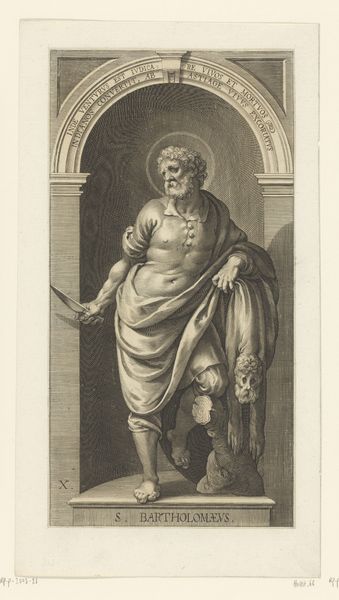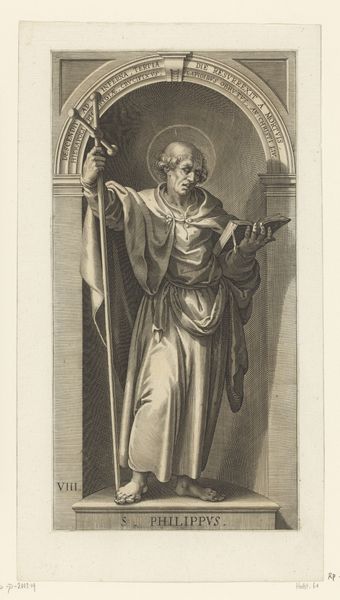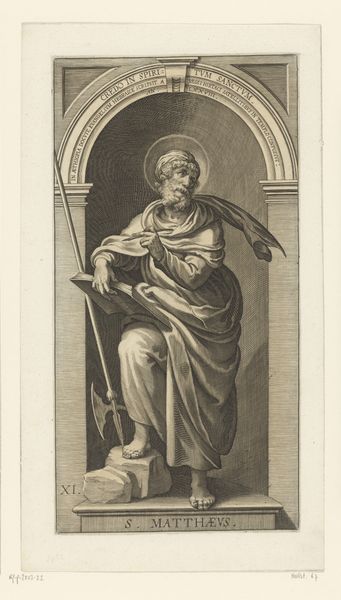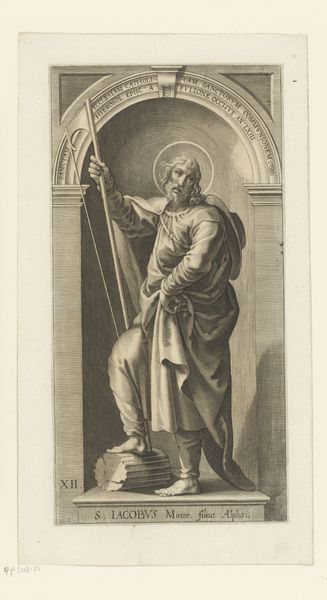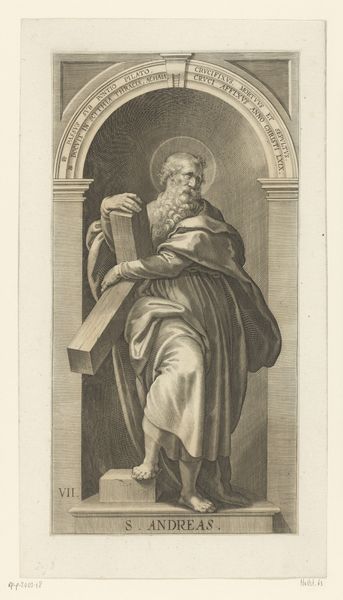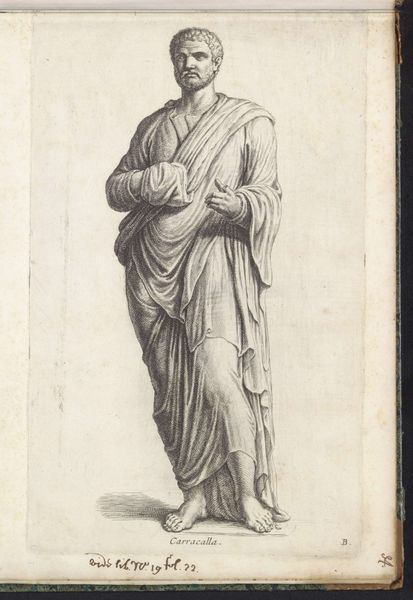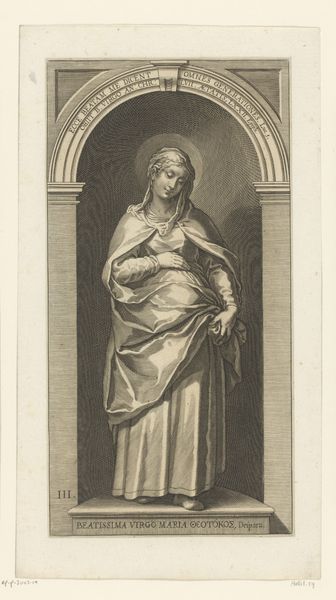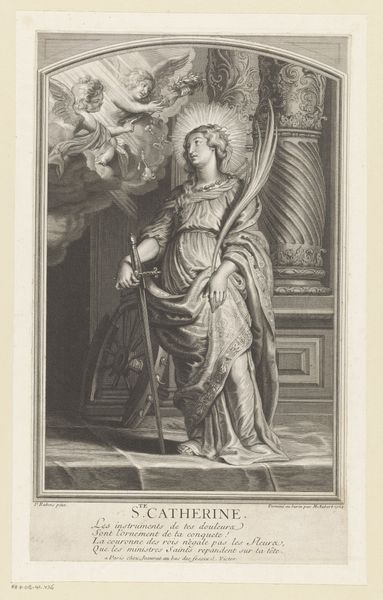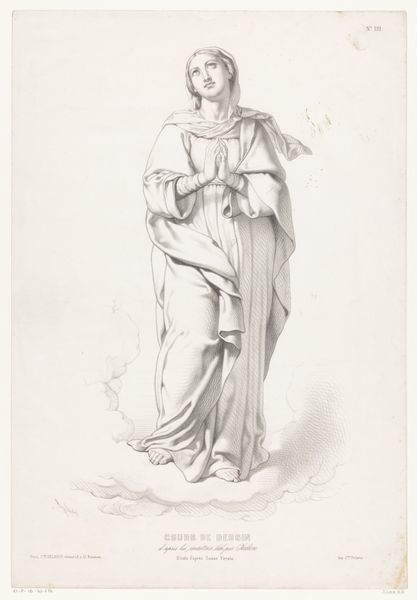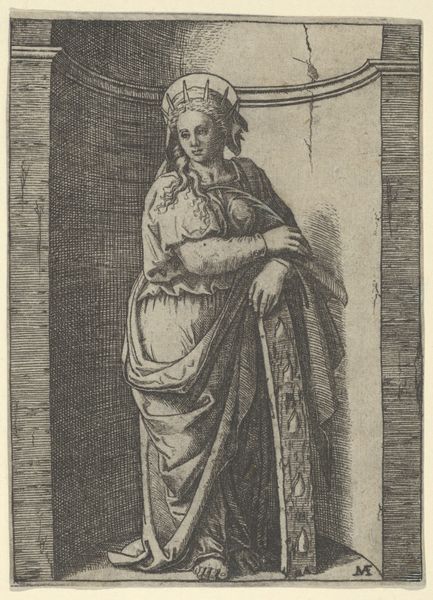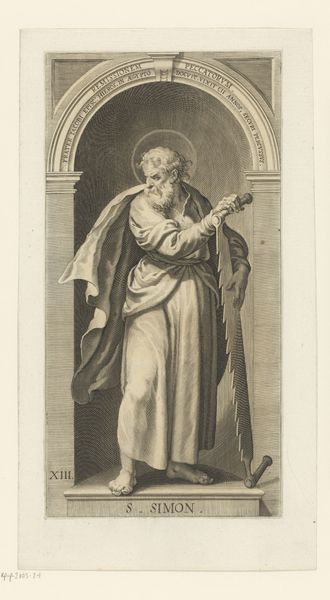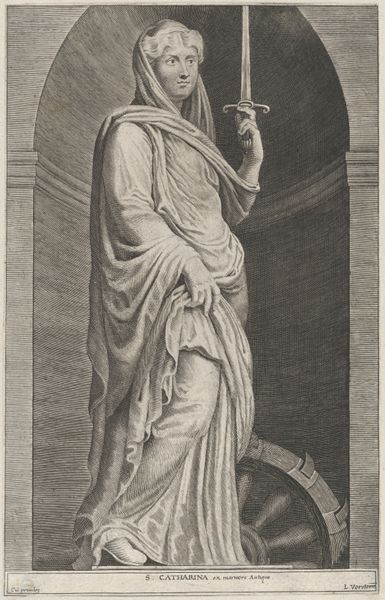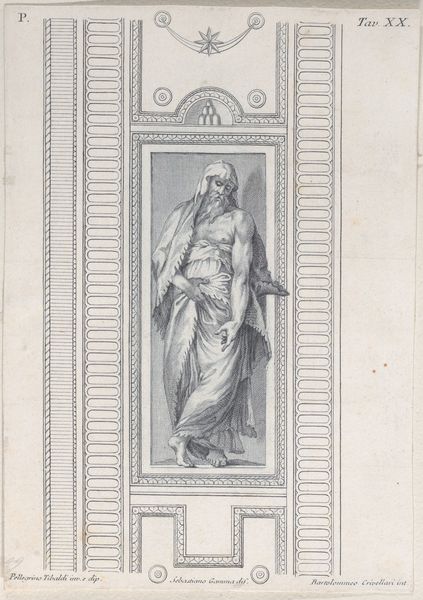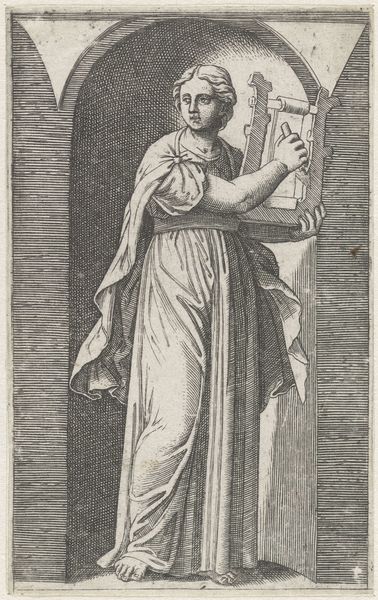
print, engraving
#
portrait
#
baroque
# print
#
figuration
#
line
#
history-painting
#
engraving
Dimensions: height 301 mm, width 153 mm
Copyright: Rijks Museum: Open Domain
Curator: Immediately, the drapery grabs me. Look how it pools and flows, almost like liquid light. Is that what initially strikes you? Editor: Actually, it’s the crispness. Knowing this image, “H. Johannes,” an engraving by Lucas Kilian dating to 1623, comes to us as a print gives me a different sense. It makes me wonder about the tools, the labor involved in such a precise execution. Curator: Precision is indeed a hallmark. The engravings, or rather, the lines etched into the plate, allow us to access and relive the era’s understanding of the saint: observe the halo, a familiar iconographic symbol of sanctity. He holds a chalice. How do these visual cues speak to your understanding of memory and continuity? Editor: Well, consider that chalice. Is it silver? Pewter, even? Each material would speak to the social status both of the represented figure, Johannes, and Kilian's anticipated patron. Moreover, engraving, as a reproductive medium, facilitated the broader distribution of religious imagery. This, in turn, affected popular piety. Curator: Absolutely, material access enables broader spiritual access! The Latin inscriptions too: “conceived of the Holy Spirit…born of the Virgin Mary,” all these are critical aspects of Catholic dogma rendered visual, portable, and repeatable through this medium. What feelings, would you say, that this image is trying to convey? Editor: Perhaps solemnity. Kilian created something readily reproducible and affordable, yes, but with great intent. Look at the saint’s gaze, distant and pensive. It almost invites introspection. He may as well be thinking what type of metal made the Holy Cup and where exactly from the earth it came. Curator: I concur. I appreciate, seeing your insight into it as more than just a rendering of a holy person. His image is embedded with intentional meaning made possible only through the artistic and material conditions of the 17th Century. Editor: Exactly. I realize my perception of craftsmanship adds so much, and I am not one to focus so intensely on the symbolism and memory imbued into it. Fascinating!
Comments
No comments
Be the first to comment and join the conversation on the ultimate creative platform.
